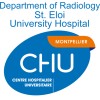
Central Venous Catheter Insertion Site and Colonization in Pediatric Cardiac Surgery
Central Line-associated Bloodstream Infection (CLABSI)Central Venous Catheter Associated Bloodstream Infection5 moreRandomized controlled trial comparing femoral vs internal jugular insertion site of central venous catheters (CVC) in newborns and infants undergoing cardiac surgery. The experimental hypothesis is that the jugular insertion site is superior to the femoral in terms of catheter colonization.

Infection Among Patients Undergoing Radical Cystectomy.
Cystostomy InfectionInvestigators plan to perform a review of medical records a single urology department to identify patients with febrile perioperative infection who underwent radical cystectomy and urinary diversion for bladder cancer from January 2014 to July 2017. Investigators plan assess a potential variables to find correlation with infections after surgery. Characteristics, including age, sex, length of hospital stay, body mass index (BMI), diabetes, hypertension, estimated glomerular filtration rate (eGFR), preoperative hydronephrosis, smoking status, neoadjuvant chemotherapy, pathological stage, lymph node involvement, types of urinary diversion, operative method (open/laparoscopic), operative time and receipt of a perioperative blood transfusion (PBT) will be asses as potential risk factor for perioperative infection.

The Role of Lactate in Viral and Bacterial Infection
Viral InfectionBacterial Infections1 moreAcute upper respiratory tract infection(AURI) is common in children, and viral infection is the main cause. However, several children with viral infection are easy to suffer from secondary bacterial infection, and the mechanism is unclear.

Staphylococcus Aureus Caught in Action at the Site of Infection
Staphylococcus (S.) Aureus InfectionThis study is to obtain a comprehensive view of S. aureus adaptations in the infected human host and (i) to improve the understanding of the interface between antibiotic therapy, resistance development and virulence factor adaptation in S. aureus infected patients, and (ii) to adapt these findings into a more sustainable use of antimicrobials for therapy.

Validation of Procalcitonin as a Biomarker Diagnosing CDI
Cardiac Implantable Electronic Device InfectionsCardiac device infections (CDI), especially pocket infections, are difficult to be diagnosed. Device pocket infections are not associated with elevated white blood cell count. CRP is only assoziated with a low sensitivity. The diagnosis of a local pocket infection is challenging and relies primarily on the clinical presentation. The prospective DIRT study identified procalcitonin (PCT) among 14 biomarkers as the most promising biomarker to aid the diagnosis of pocket infection. The study aims to validate the proposed PCT cut-off value of 0.05 ng/ml for the diagnosis of pocket infection

Trimethoprim-Sulfamethoxazole vs Levofloxacin as Targeted Therapy for Stenotrophomonas Maltophilia...
Stenotrophomonas InfectionThis study seeks to compare mortality outcomes of levofloxacin and trimethoprim-sulfamethoxazole treated patients who have Stenotrophomonas maltophilia blood stream or lower respiratory tract infections by retrospectively analyzing a propensity-matched cohort from a large dataset of electronic health record data.

Emerging Invasive Fungal Infections in Critically Ill Patients
Fungal InfectionICU Acquired WeaknessRationale: Beside Candida and Aspergillus, emerging invasive fungal infections (EIFIs) are increasing in intensive care setting and are associated with high morbidity and mortality. However, data are scarce, particularly in ICU settings and for EIFIs other than mucormycosis. Objectives: to describe epidemiological trends and clinical features of EIFIs in intensive care units (ICU) and to assess their outcome. Methods: All records of adult patients diagnosed with an EIFI in a medical ICU between 2006 and 2019 were analyzed retrospectively. In-ICU mortality was assessed, then factors associated with mortality were identified. Survival at day-90 was calculated by the Kaplan-Meier method.

Tedizolid Suppressive Antimicrobial Therapy in a Reference Center
Bone and Joint Infectionthe aim of the study is to describe the management and outcome of patients having an osteo-articular infection treated by tedizolid as a suppressive antibiotic therapy.

Infection With Unknown Origin in the Emergency Department
InfectionPatients suspected with infection is one of the major groups, who are admitted to the Danish Emergency Departments (ED). Currently, there is no overall description of the distribution of these infections. The aim of this study is to characterize ED patients with a suspected infection whereby the focus of the infection is of an unknown origin.

Personalized Phage Treatment in Covid-19 Patients With Bacterial Co-Infections Microbials for Pneumonia...
Covid19Bacteremia4 morePhage Treatment in Covid-19 Patients with Bacterial Co-Infections
